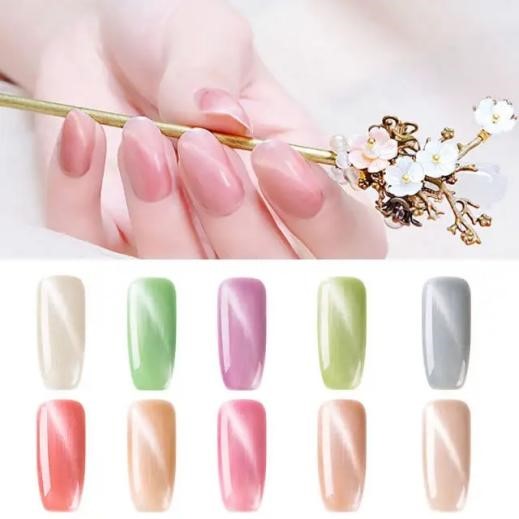-
Хэт ягаан туяаны давирхайг 3D хэвлэх аюулгүй ашиглах журам
1、 Аюулгүй байдлын мэдээллийн гарын авлагыг анхааралтай уншина уу Хэт ягаан туяаны давирхай нийлүүлэгчид хэрэглэгчийн аюулгүй ажиллагааны үндсэн баримт бичиг болох Аюулгүй байдлын мэдээллийн хуудсыг (SDS) өгөх ёстой.3D принтерүүд нь операторуудыг хатаагүй гэрэлд мэдрэмтгий давирхай болон хэт ягаан туяанд өртөхөөс урьдчилан сэргийлэх зорилгоор суурилуулсан аюулгүй байдлын функцуудтай...Цааш унших -

Хэт ягаан туяаны цавууны үндсэн танилцуулга
Сүүдэргүй цавууг хэт ягаан туяаны цавуу, гэрэл мэдрэмтгий цавуу, хэт ягаан туяагаар эмчлэх цавуу гэж нэрлэдэг.Сүүдэргүй цавуу гэдэг нь хатуурахын тулд хэт ягаан туяагаар цацруулж байх ёстой цавууны ангиллыг хэлнэ.Тэдгээрийг наалдамхай бодис болгон ашиглахаас гадна будаг, бүрээс, бэхний наалдамхай бодис болгон ашиглаж болно.У...Цааш унших -

Хэт ягаан туяаны давирхайн үндсэн танилцуулга
Хэт ягаан туяаны давирхайг гэрэлд мэдрэмтгий давирхай гэж нэрлэдэг бөгөөд энэ нь гэрэлд өртсөний дараа харьцангуй богино хугацаанд физик, химийн хурдан өөрчлөлтийг авч чаддаг олигомер бөгөөд ингэснээр хэт ягаан туяаны давирхайг хооронд нь холбож, хатууруулж, харьцангуй бага молекул жинтэй гэрэл мэдрэмтгий давирхай юм. реактив бүлгүүдтэй...Цааш унших -

Хэт ягаан туяаны цавуу сонгох, худалдан авах ур чадвар
Хэт ягаан туяаны цавууг худалдан авах ур чадвар нь дараах байдалтай байна: 1. UB цавууг сонгох зарчим (1) Холбох материалын төрөл, шинж чанар, хэмжээ, хатуулгийг харгалзан үзэх;(2) Холбох материалын хэлбэр, бүтэц, үйл явцын нөхцлийг харгалзан үзэх;(3) Ачаалал ба хэлбэрийг (суналтын хүч, ши...Цааш унших -

Хэт ягаан туяаны давирхайн шинж чанар
(1) Бага зуурамтгай чанар.Хэт ягаан туяаны эдгээх нь CAD загвар дээр суурилдаг бөгөөд давирхайг давхаргаар давхарлаж, эд анги үүсгэдэг.Эхний давхаргыг хийж дууссаны дараа шингэн давирхай нь хатуурсан хатуу давирхайн гадаргууг автоматаар бүрхэхэд хэцүү байдаг, учир нь давирхайн гадаргуугийн хурцадмал байдал ...Цааш унших -

Хэт ягаан туяаны офсет хэвлэлийн нийтлэг асуудлуудын дүн шинжилгээ
Тамхины савлагаанд алт, мөнгөн картон, лазер дамжуулах цаас зэрэг шингэдэггүй хэвлэх материалыг хэрэглэснээр хэт ягаан туяаны офсет хэвлэлийн технологи нь тамхины савлагаа хэвлэх ажилд улам бүр өргөн хэрэглэгдэж байна.Гэсэн хэдий ч хэт ягаан туяаны офсет хэвлэх үйл явцыг хянах нь бас хамааралтай ...Цааш унших -

Хэт ягаан туяаны бүрхүүлд давхар хатууруулах давуу болон сул талууд
Хос хатууруулах нь ердийн дулааны хатууралтын болон хэт ягаан туяаны хатууралтын системийн давуу талыг хослуулсан шинэ технологи юм.Энэ нь хэт ягаан туяаны бүрхүүлд маш сайн зураас болон химийн эсэргүүцлийг хангахын зэрэгцээ дулааны урвалаар сүүдрийг хатууруулах боломжийг олгодог.Энэ онцлог нь давхар хатуурлыг сэтгэл татам болгодог...Цааш унших -

Хэт ягаан туяаны давирхайн хэвлэлийн ангилал
Хятадад улам олон сонин хэвлэх үйлдвэрүүд хэт ягаан туяаны давирхайн технологи, тоног төхөөрөмжийг үйлдвэрлэхэд ашигладаг.Түүний техникийн давуу талууд нь дараах байдалтай байна: хурдан хатаах, өндөр нягтрал;Зар сурталчилгааг онлайнаар хэвлэх;Бүрсэн цаасан дээр номын хавтас хэвлэх боломжтой;Сэтгүүлийн цаасан дээр хэвлэх боломжтой;Энэ нь ...Цааш унших -

Усан дээр суурилсан эпокси давирхай нь ирээдүйд хүчтэй хөгжиж байна
Усан дахь эпокси давирхайг анионик давирхай ба катион давирхай гэж хувааж болно.Анионик давирхайг анод электродоор бүрэх, катодын электродоор хучихад катион давирхайг ашигладаг.Усан дахь эпокси давирхайн гол шинж чанар нь зэврэлтээс хамгаалах маш сайн үзүүлэлт юм...Цааш унших -

Зах зээл дээр нийтлэг байдаг гэрэл мэдрэмтгий хэт ягаан туяаны давирхай
Ерөнхий давирхай Эхний үед 3D хэвлэх давирхайн тоног төхөөрөмж үйлдвэрлэгчид өөрсдийн өмчлөлийн материалаа зарж байсан ч зах зээлийн эрэлт хэрэгцээнд нийцүүлэн олон тооны давирхай үйлдвэрлэгчид гарч ирэв.Эхэндээ ширээний давирхайн өнгө, гүйцэтгэл маш хязгаарлагдмал байсан.Тэр үед, ...Цааш унших -

Уян полиуретан материалын хэрэглээний талбар ба хөгжлийн хэтийн төлөв
Полиуретан эластомерууд нь блокийн полимерүүдэд хамаардаг, өөрөөр хэлбэл полиуретан макромолекулууд нь "зөөлөн сегментүүд" ба "хатуу сегментүүд" -ээс бүрдэх бөгөөд хатуу сегментүүд (изоцианат ба гинж сунгагчаас) тархсан микро фазын тусгаарлах бүтцийг бүрдүүлдэг. ...Цааш унших -
2023 оны хэт ягаан туяаны давирхайг хөгжүүлэх хэтийн төлөв
Хэт ягаан туяагаар эдгээдэг давирхай нь цайвар ногоон тунгалаг шингэн бөгөөд гадаргуу дээр хатууруулагч, хурдасгагч түрхэх шаардлагагүй.Бүрхүүлээр бүрсэний дараа хэт ягаан туяаны чийдэнгийн хоолойд хийж, хэт ягаан туяанд 3-6 минут байлгасны дараа бүрэн эдгэрнэ.Курингийн дараа өндөр хатуулагтай...Цааш унших















